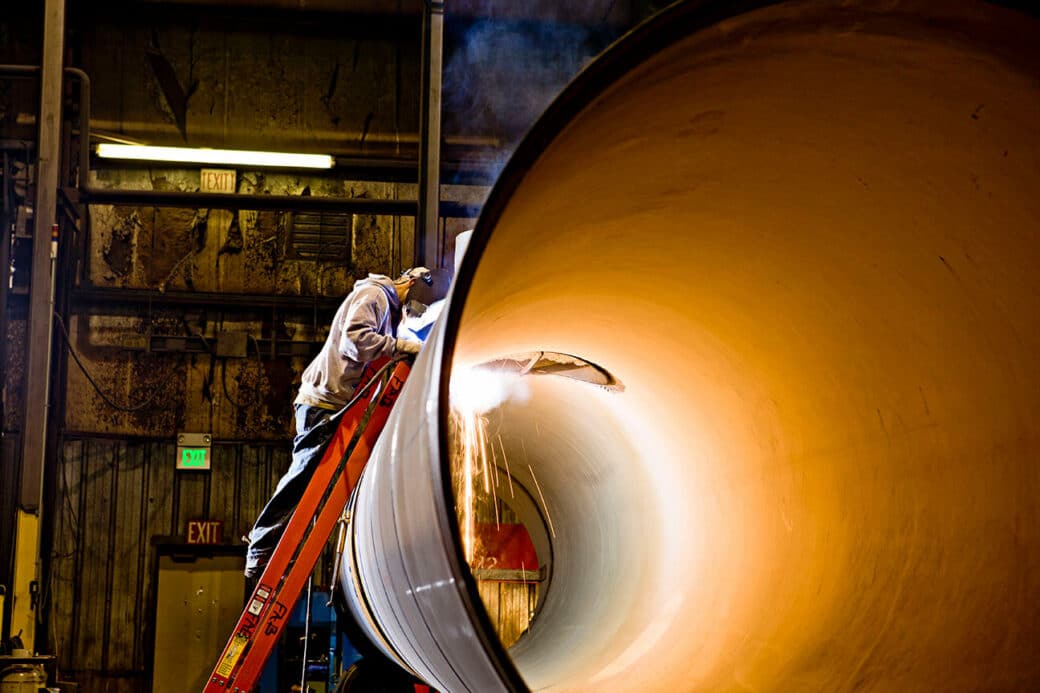Linings

Water Transmission pipelines achieve incredibly long lifespans with the use of modern protective linings. These long-standing protective systems prevent corrosion, an electrochemical process that oxidases steel in the presence of moisture and oxygen. Our factory-applied protective linings isolate the steel pipe while ensuring safe water delivery.
Cement Mortar Lining
Cement mortar lining is one of the original linings used in engineered steel pipe and dates back to the 1800s. It is still the most specified lining material in today’s water transmission industry. Northwest Pipe applies cement mortar lining in accordance with AWWA C205 specifications by centrifugally spinning a lean mixture of cement mortar into a pipe’s interior surface to create a dense, smooth, uniform surface.
Cement mortar lining adds pipe stiffness to resist external loads and deflection.
A key contribution is the passivation of the steel with the high Ph mortar to form a corrosion resistant film that protects the pipe wall. The lining has the ability to selfheal autogenously or regenerate the corrosion resistant film in the presence of water
Best for:
Potable and Raw water transmission pipelines, force mains, gravity flow pipelines, slip lines and cooling water. Cement-mortar linings perform best when flow velocity is 20 feet per second or less.
Polyurethane Lining
Polyurethane lining is a liquid film that offers excellent water and chemical resistance properties. Applied at various thicknesses in accordance with AWWA C222, it provides an excellent corrosion barrier by preventing moisture flow through the film and further preventing corrosion of the substrate or pipe wall. Polyurethane lining is tough, resilient, and extremely abrasion-resistant, making it an ideal lining choice for higher internal velocities.
Best for:
Potable or non-potable liquids being transported in high velocities and/or in extreme conditions including wastewater, gravity sewer and sanitary force mains, and other industrial applications.
Liquid Epoxy Lining
Like polyurethane, liquid epoxy lining provides excellent water and chemical resiliency. Epoxies are typically solvent-based, although some 100% solid epoxies are available. After mixing, an airless sprayer or brush distributes the epoxy onto the pipe in accordance with AWWA C210.
With proper surface preparation, controlled applications, and strict curing procedures, thin-film materials can provide a strong, resistant, long-lived lining.
Best for:
Potable or non-potable liquids being transported in high velocities and/or in extreme conditions including wastewater, gravity sewer and sanitary force mains, and other industrial applications.

